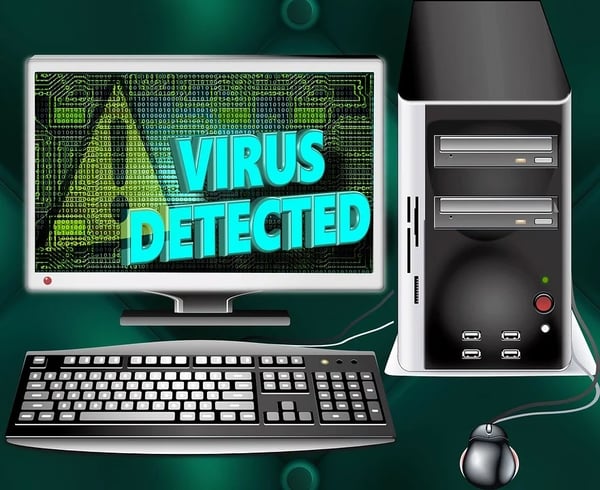
It can be harder than you might think to determine whether a company device is suffering from a malware infestation. Malicious apps are deliberately designed to hide in plain sight or run in the background of an operating system (OS) to evade detection. However, with the right knowledge they can be rooted out, disabled, and deleted for good. Here's a guide to quick and easy malware detection.
Key Signs Of A Malware Infection
Much like humans, computers and smartphones display distinct symptoms of infection when they've caught a virus, Trojan, or worm. Keep a lookout for any of the following problems.
1. Unwanted Pop-Ups & PUPs
Many strains of malware use what's called a privilege escalation attack to gain access to the inner workings of your OS. One way that they can gain the administration permissions they need to change your OS is through deception.
An initial, relatively harmless potentially unwanted program (PUP) is downloaded. This program then covers the desktop with annoying pop-up advertisements, often claiming that the machine has been infected. The adverts prompt the user to download 'anti-virus' software, claiming it will 'fix' the problem or tune-up the PC. These adverts can also appear in your web browser, either via a hack of a website you're visiting or through a local redirect.
In reality, these programs will do nothing except download yet more concealed malware, such as key loggers, credit card skimmers, and spyware. Ignore the pop-ups and scan for malware with a reputable anti-malware package immediately. While companies such as Norton and Malwarebytes do advertise, they'll never use illegal sales tactics like browser hijacks.
2. Suspicious Browser & Download History
Many variants of malware require the user to manually download a file to infect their machines. If you're supervising company computers and notice unauthorised, unaccountable programs in a download list (particularly any with the extensions .dll or .exe) or visits to phishing webpages, it's worth investigating further.
3. Strange Web Content
Some malware programmers make money by redirecting web traffic onto specific pages or by injecting paid advertisements and links into regular browsing content, often advertising pornography or imitation white-box goods. If you see unexplained, offensive, or strange banners and pop-ups, scan for malware immediately.
4. Slowdowns & Instability
While they may also be the sign of an ageing OS installation or dated hardware, slow running, freezing, and unexpected error messages may be signs that a hidden program is interfering with the OS behind the scenes. Malware infections can corrupt sections of the OS and files without specifically meaning to, causing the device to play up.
5. Lack Of A Running Anti-Virus And Firewall
All modern variants of Windows (after XP SP1) come packaged with a default anti-malware and firewall setup. If they've been disabled and no third-party anti-virus or anti-malware program is running, a malware infection may have deliberately switched them off to avoid immediate detection.
6. Unexplained Account Hacks
If your company email, bank, or social media accounts are broken into and you haven't been phished, you've most likely had your details lifted from a hidden key logger or browser monitor. Change your passwords, then try to isolate any devices you've logged in on.
Malware Safety With Absolute ITAD
At Absolute IT Asset Disposals, we specialise in safe data deletion, erasure, and device recycling. Professional data sanitisation will effectively clean a device of malware without having to destroy the asset. Call or email us today to find out more.
Image source: Pixabay












